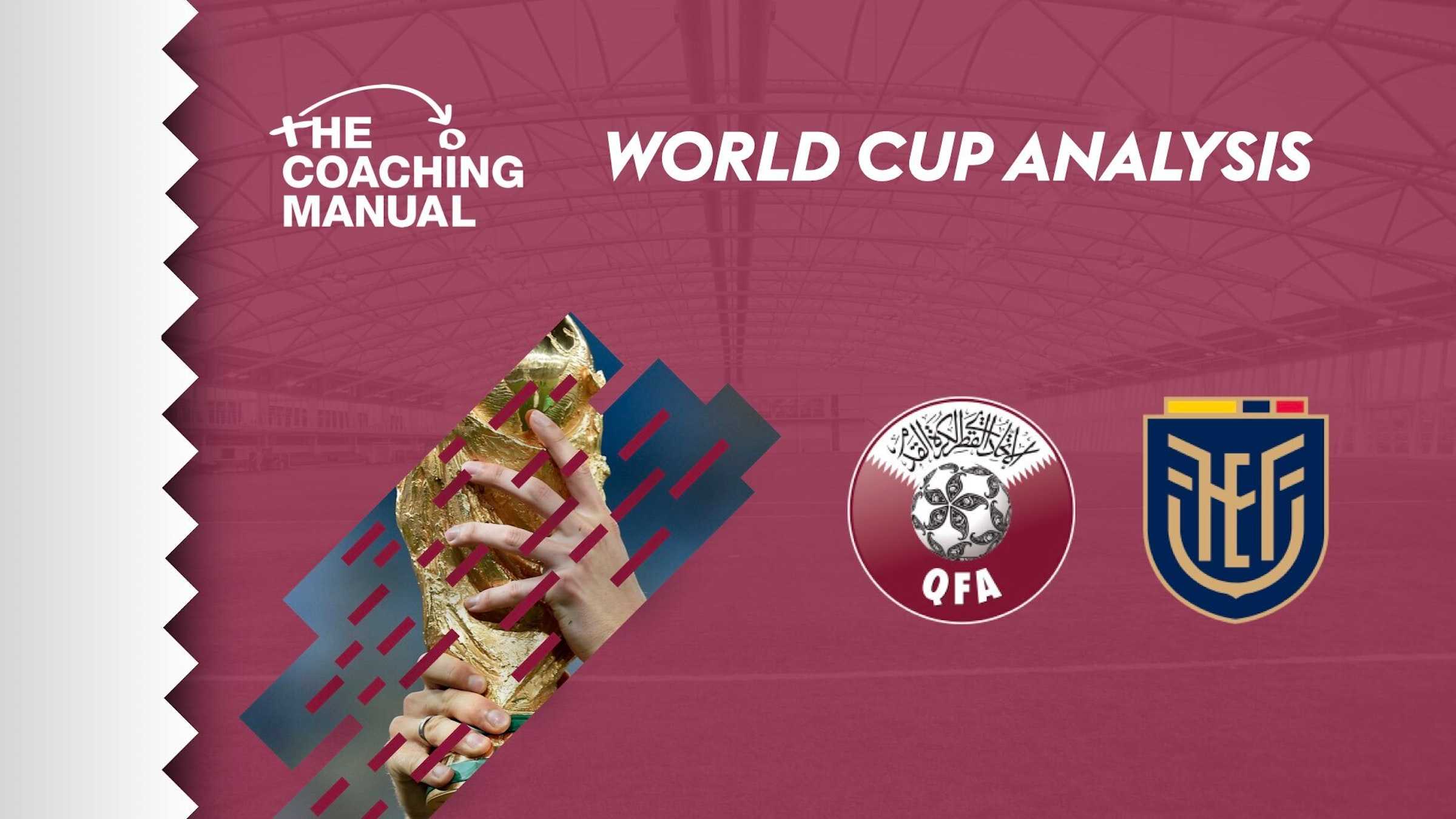There is an abundance of analysis of matches at the World Cup, but The Coaching Manual does things differently.
We give our audience insight into the tactics and systems on display in Qatar, but we go the extra step and give our users practical training sessions that they can deliver to their players so that for the next 6 weeks the World Cup can inspire our coaches and players to emulate their heroes on the training field.
So, whilst your regular season curriculum might go out of the window for the next few weeks, you can still use the World Cup to create genuine outcomes for everyone.
Formations
Qatar: 1-5-3-2
Ecuador: 1-4-4-2
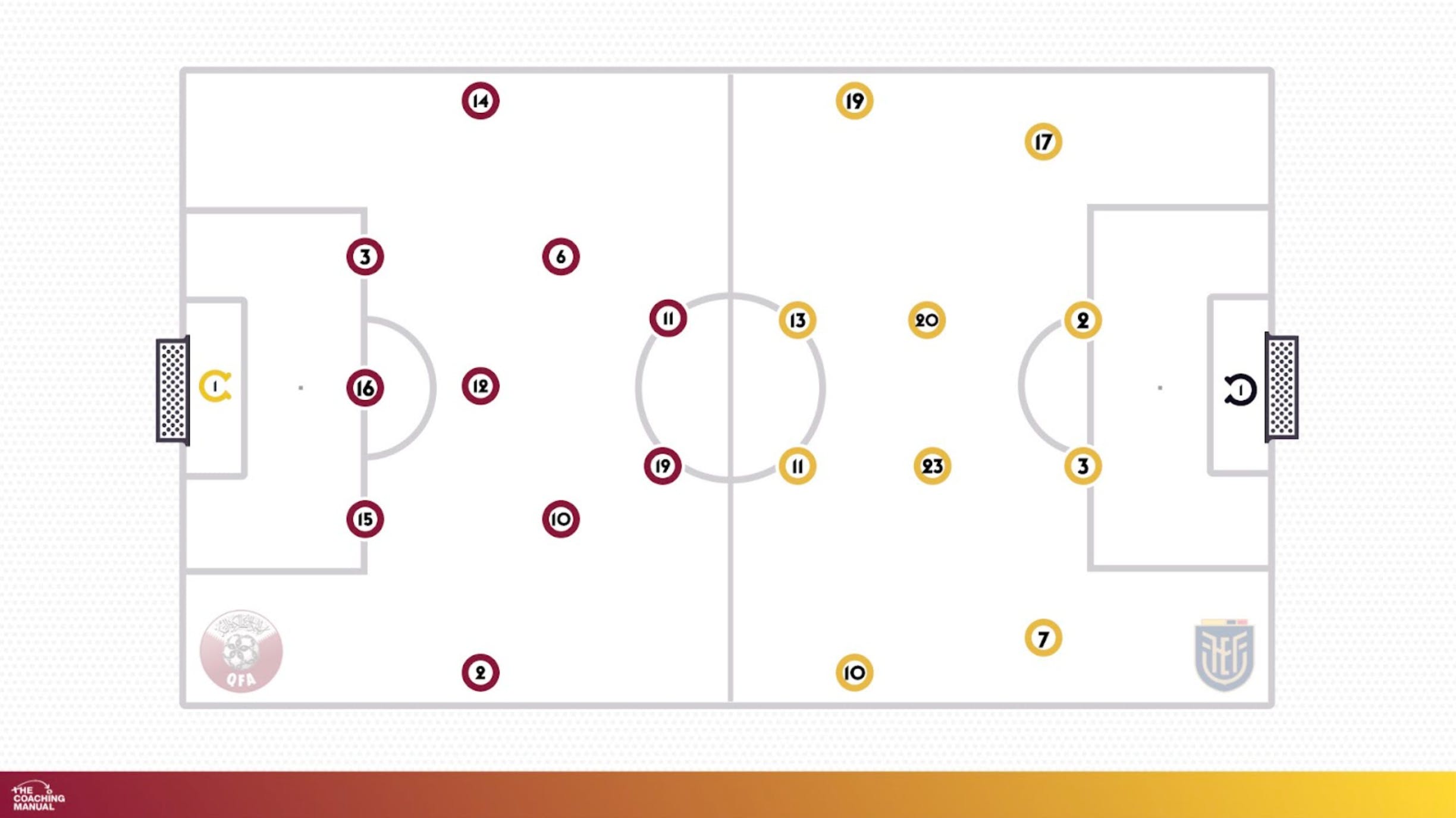
First Half Review
The first game of the tournament saw hosts Qatar struggle to keep up with the intensity of Ecuador.
In the first two thirds, Ecuador kept the ball well, looking to move the narrow-based shape of Qatar, who set up in a 1- 5-3-2. Switching the play quickly, and creating gaps to play through was an integral part of the game plan for Ecuador.
Find more information on how to get your players to switch the play more, check out this guide by Lee Fletcher and this session by Terry Moore:
- Guide: https://app.thecoachingmanual.com/Content/5001
- Session: https://app.thecoachingmanual.com/Session/1899
In the first two thirds Ecuador were patient, working the ball into the final third where they would get both fullbacks high and wide so they could look to get crosses into the box frequently.
This caused some chaos in the Qatar penalty area which led to a goal in the first 3 minutes. The crosses had eventually paid off, with two fullbacks delivering with quality eventually picking out Enner Valencia (#13), who headed well into the bottom corner. However, this goal was disallowed for offside.
The first goal was made possible from a quick transition after Ecuador forced Qatar to play inside, subsequently pinching the ball and playing it towards the goal within two passes of regaining it.
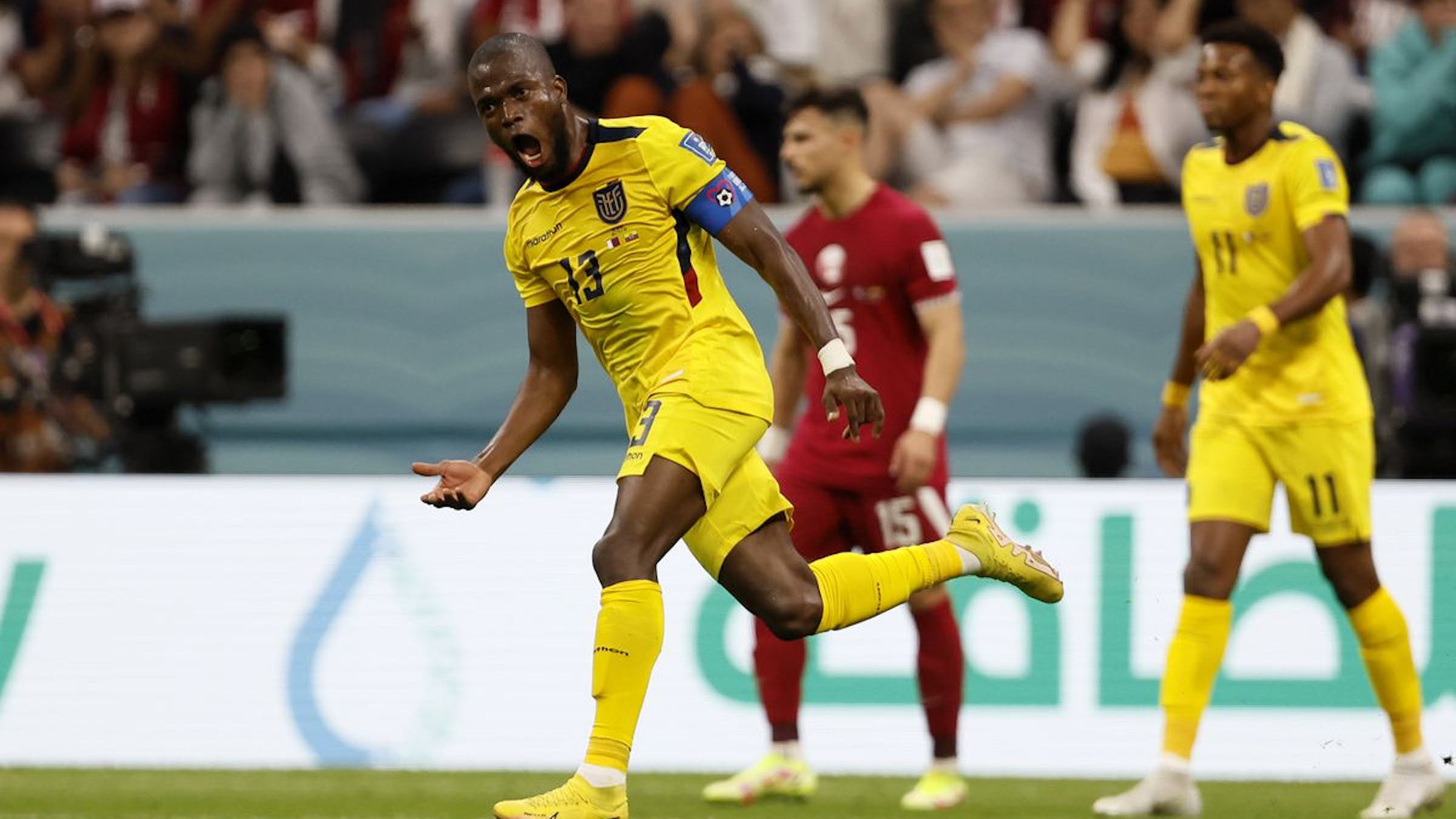
Valencia (#13) attacked the space and disguised his intentions well by going around the goalkeeper and winning a penalty, which the striker calmly despatched into the bottom-right corner.
Ecuador went into half time 2-0 up after another goal from Enner Valencia. The quality of cross put in for Valencia’s brilliant header is a great example of crossing and finishing - look at this session delivered by Terry Moore to get your players to score more goals from crosses: https://app.thecoachingmanual.com/Session/1007
Second Half Review
In the second half, the intensity of the game dropped considerably, with Ecuador already 2-0 up. The number of chances was limited in the game for both teams.
With Qatar playing 1-5-3-2 it enabled Ecuador to keep possession by switching the play, as the 2 centre forwards and 2 attacking midfielders could not cover the ground due to the speed at which Ecuador played.
When out of possession, Ecuador dropped off and allowed the 3 centre backs to have possession and eventually regained the ball when Qatar gave away possession. This eventually affected the Qatar players physically and mentally, which in turn affected the intensity of the back end of the 2nd half.
Specific Strategy Building in the Defensive and Middle Thirds - Ecuador
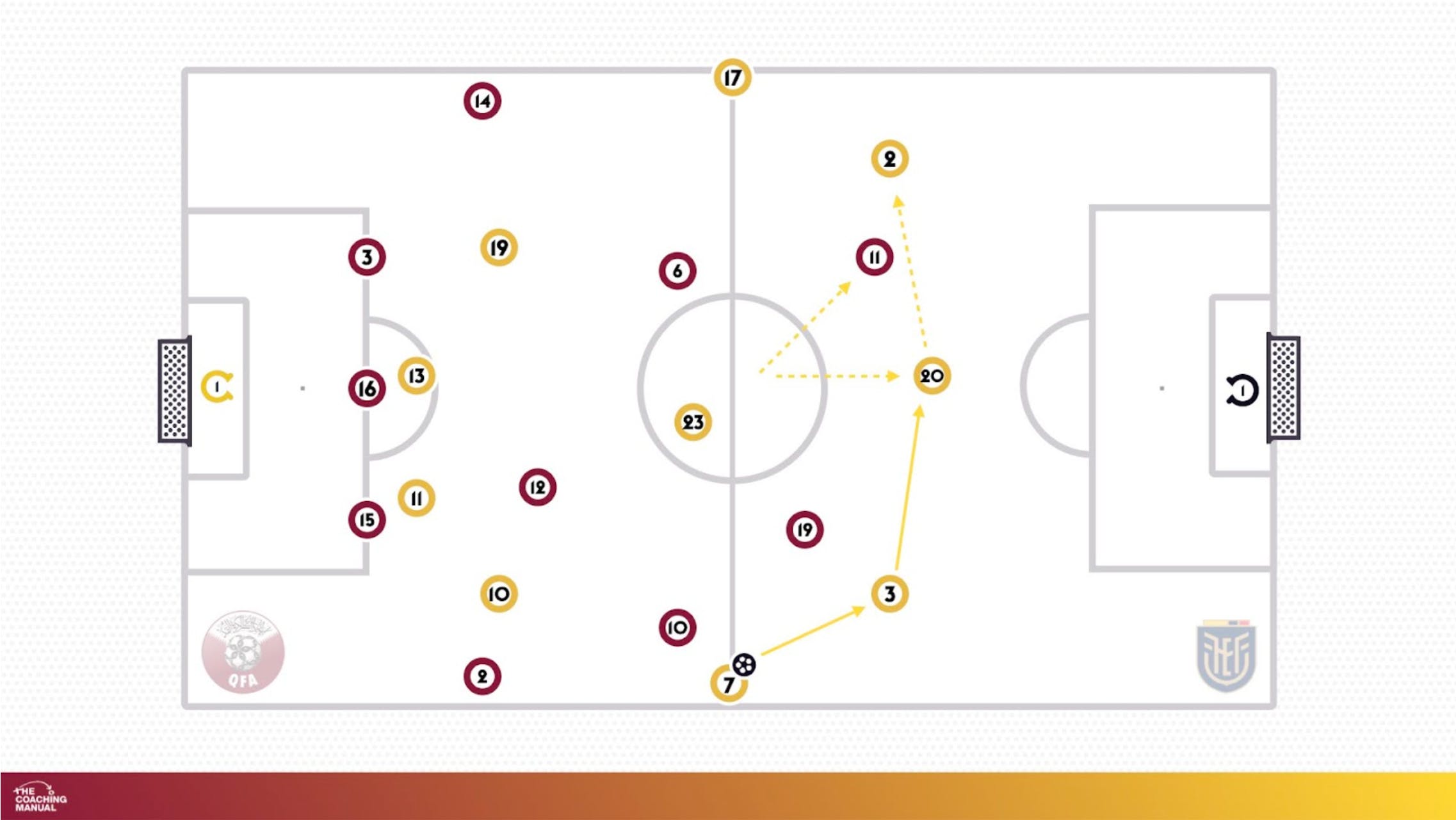
When building in the defensive and middle thirds, Ecuador's Mendez (#20) would drop in between the two centre backs as they split (See image above).
The two wingers would move inside between the full back, centre back, and one of the centre midfielders, enabling them to be in a pocket of space between the lines - as well as pinning both the wing backs.
The full backs would then stay wide, enabling them to actively switch the play. If a wing back steps out, it allows a pass into one of the forward players.
Moisés Caicedo (#23) would hold up in the centre of the field, looking to be an option on the half turn.
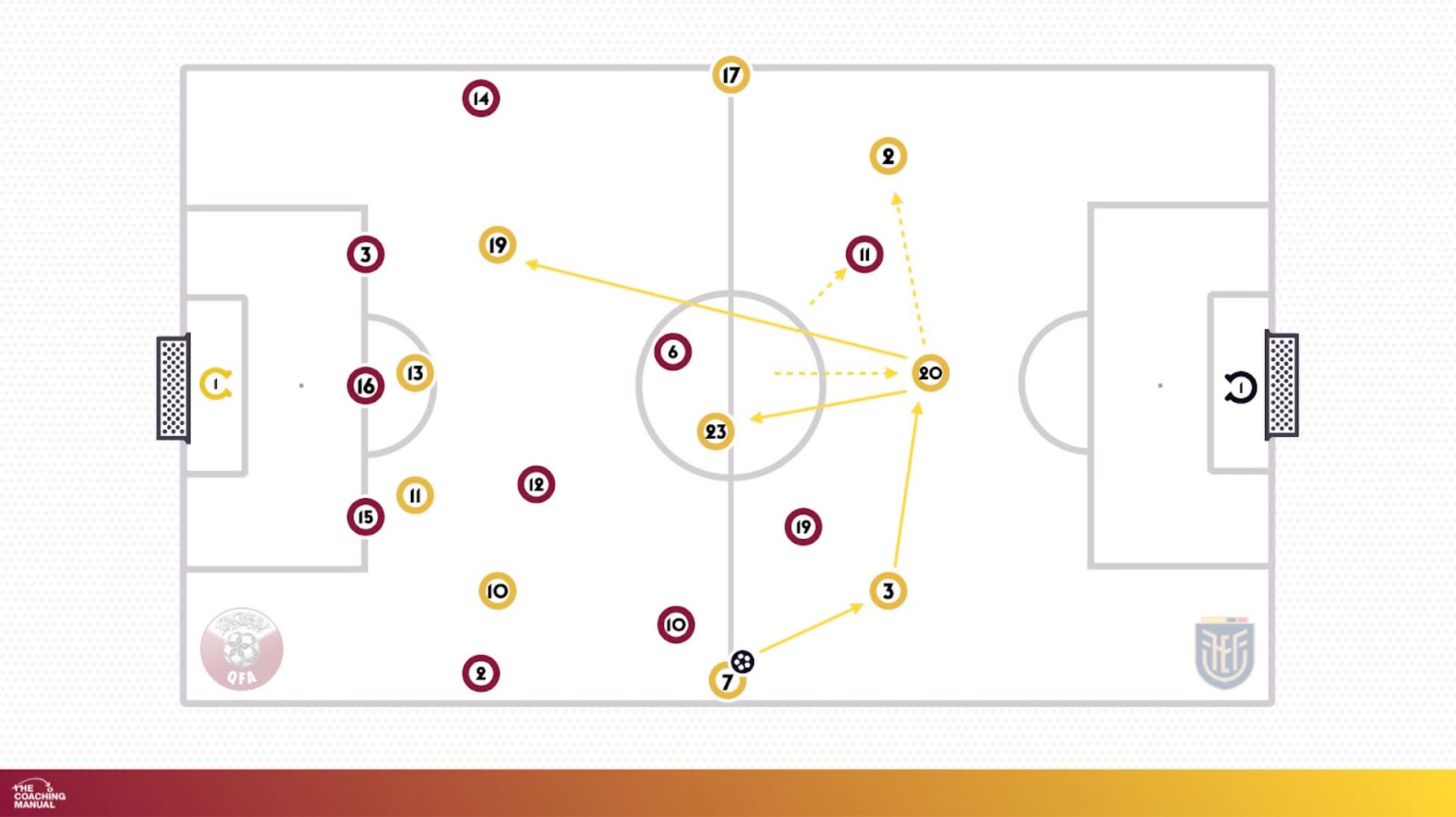
When the ball starts with one of the Ecuador fullbacks, Qatar tried to press, with the one of the attacking midfielders and one of the strikers trying to force #3/#7 to clear it under pressure, as the pass to the #2 is blocked off by the other forward. This is where Mendez (#20) is crucial for Ecuador, as he drops in enabling an opportunity to switch the play or to play through.
Option 1 is to play forward. As the #2 moves out, the striker will follow, creating a forward passing line into one of the front 4 or Caicedo (#23). This is because the back 5 cannot move out too far leaving too much space for the forward players.
Numbers #6 and #12 cannot protect all the space in behind them, so they will leave a gap or a player free, which was often Caicedo as he is the furthest away from goal. This allowed them to protect the danger behind them. (See image above).
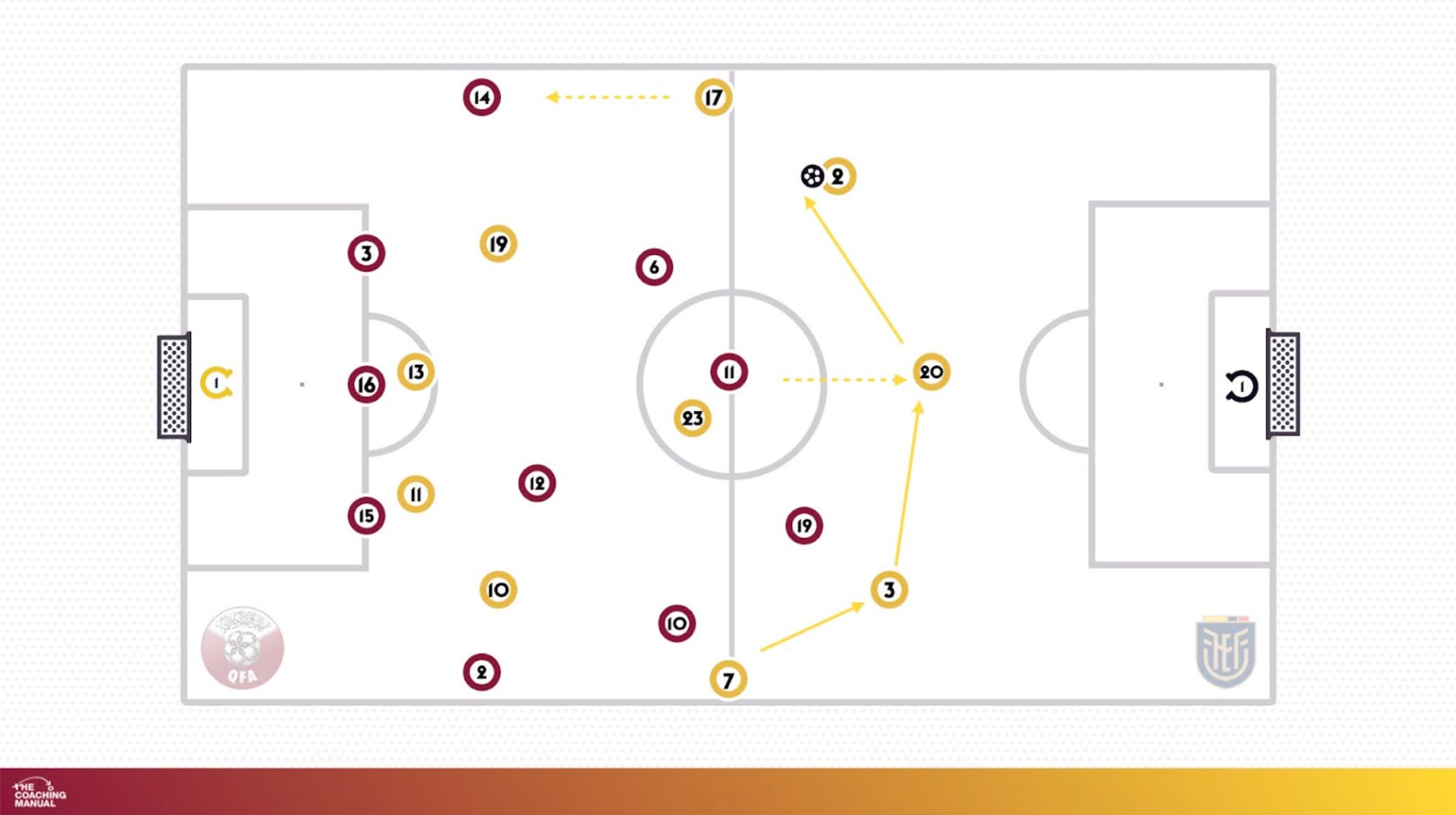
Option 2 is if the second striker protects the centre, they can get out by switching the play to the other centre back and they play through or step in with the ball (see image above).
Look at Martin Hunter’s recent session and guides on creating space to enable your team create and and exploit space more:
- Session: https://app.thecoachingmanual.com/Session/18013
- Creating Space Guide: https://app.thecoachingmanual.com/Content/55279
- Exploiting Space Guide: https://app.thecoachingmanual.com/Content/55311
Stats of Game
Ecuador have the 4th youngest team in the World Cup with an average age of 25 years and 334 days (25.6 Years), which shows there is much more to come from this promising young side for the remainder of the World Cup and future tournaments.
Next Game
Qatar’s next game is against Senegal in their second group match.
Ecuador take their first win of the world cup into a game against The Netherlands in their second group match.
If you want to access the content discussed in this article, sign up for a Premium account for just $7/£5 per month!
Did you know that The Coaching Manual does packages for clubs, providing you and your colleagues with professional tools that help you educate your coaches, communicate your curriculums and philosophies, and provide an all-round better experience for your players? Enquire now by emailing sales@thecoachingmanual.com.

